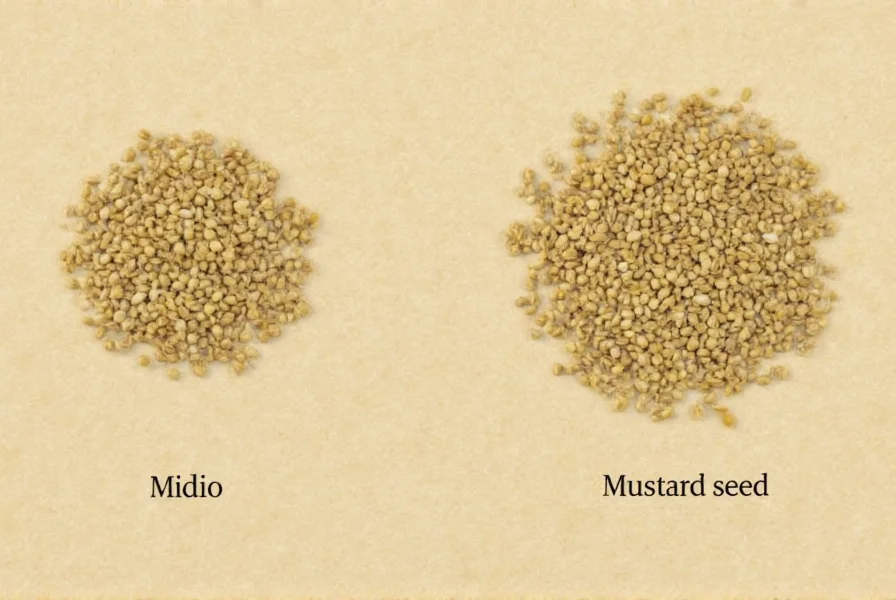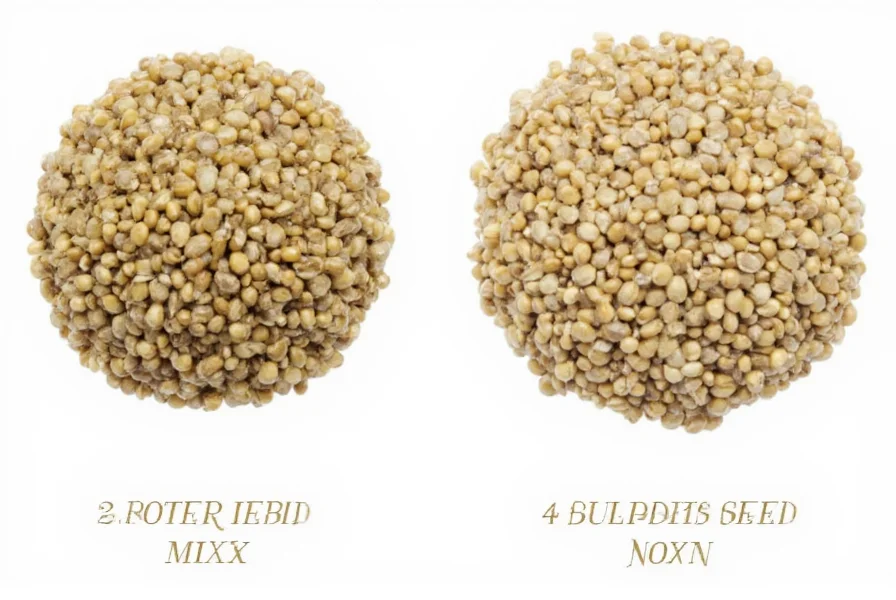When exploring the actual size of mustard seed in the bible, it's essential to understand both the botanical reality and the cultural context. Mustard seeds, derived from plants in the Brassica and Sinapis genera, consistently measure 1-2 mm across. This precise mustard seed dimensions millimeters measurement provides clarity for those studying religious texts or gardening practices.
Botanical Characteristics of Mustard Seeds
Mustard plants produce tiny, round seeds that vary slightly in size depending on the specific variety. Black mustard (Brassica nigra) seeds average 1.5 mm in diameter, while yellow mustard (Brassica hirta) seeds measure approximately 2 mm. These dimensions place mustard seeds among smaller seeds, but not the absolute smallest.
The scientific measurement of mustard seeds reveals they contain approximately 8-10% moisture content when properly dried. Their hard outer coating protects the embryo inside, allowing these resilient seeds to remain viable for several years under proper storage conditions.
Biblical Context and Common Misconceptions
The famous mustard seed parable appears in three Gospels (Matthew 13:31-32, Mark 4:30-32, Luke 13:18-19), where Jesus compares the Kingdom of Heaven to a mustard seed “that a man took and planted in his field.” Many readers interpret this as claiming mustard seeds are the smallest seeds, but this represents a biblical mustard seed size misconception that requires clarification.
In first-century Palestine, mustard seeds were proverbially small — the smallest seeds commonly used in agriculture at that time. Jesus employed this familiar reference to illustrate how something seemingly insignificant could grow into something substantial. The parable's power comes from this agricultural reality, not from botanical precision.
| Seed Type | Average Diameter | Comparison to Mustard Seed |
|---|---|---|
| Mustard Seed | 1-2 mm | Reference point |
| Orchid Seed | 0.05-0.5 mm | 20-40x smaller |
| Sesame Seed | 2-3 mm | 1.5x larger |
| Poppy Seed | 0.5-1 mm | Comparable or slightly smaller |
Understanding the How Small is a Mustard Seed Question
When people ask how small is a mustard seed, they're often seeking context beyond mere measurements. In practical terms, it takes approximately 10-15 mustard seeds placed side by side to equal the width of a standard pencil eraser (about 5 mm). This tangible comparison helps visualize the mustard seed dimensions millimeters in everyday terms.
Gardeners working with mustard seeds note that their small size makes them challenging to handle individually but perfect for broadcasting over soil. The seeds' compact nature allows them to establish roots quickly when planted at the proper depth of 1-2 cm.
Practical Implications Across Contexts
Understanding the actual size of mustard seed in the bible matters for multiple reasons:
- Religious studies: Provides accurate context for interpreting ancient texts
- Gardening: Helps determine proper planting depth and spacing
- Culinary use: Explains why mustard seeds behave differently than larger seeds when cooking
- Scientific research: Contributes to understanding seed dispersal mechanisms
The comparison of mustard seed size to other seeds reveals why mustard plants were particularly impressive in ancient agricultural contexts. While not the absolute smallest seeds, mustard seeds represented the lower threshold of what farmers would deliberately plant, making their transformation into sizable shrubs noteworthy.

Conclusion: Beyond the Size Question
The enduring significance of the mustard seed extends far beyond its physical dimensions. Whether examining the scientific measurement of mustard seeds or exploring their symbolic meaning, the key insight remains consistent: small beginnings can yield substantial results. This principle applies equally to agricultural practices, spiritual growth, and personal development.
By understanding the precise mustard seed dimensions millimeters while appreciating the cultural context, we gain a more nuanced perspective that honors both scientific accuracy and traditional interpretations.
Frequently Asked Questions
How many mustard seeds equal one gram?
Approximately 300-400 mustard seeds equal one gram, depending on the specific variety. Black mustard seeds tend to be slightly smaller and more numerous per gram than yellow mustard seeds.
Are mustard seeds the smallest seeds mentioned in the Bible?
No, mustard seeds aren't the smallest seeds in botanical reality, but they represented the smallest commonly planted seeds in first-century Palestine. The biblical reference uses mustard seeds proverbially to illustrate growth from humble beginnings, not as a precise botanical statement.
What is the exact measurement of a mustard seed in millimeters?
Mustard seeds typically measure between 1-2 millimeters in diameter, with most varieties averaging around 1.5 mm. This precise mustard seed dimensions millimeters measurement helps distinguish them from other small seeds like poppy or sesame.
Why was the mustard seed chosen for the biblical parable?
The mustard seed was chosen because it represented the smallest seed commonly used in agriculture during that time period in Palestine. Its transformation into a sizable plant (reaching 6-8 feet tall) from such a tiny beginning made it an effective illustration of growth from humble origins.
How does mustard seed size affect its culinary use?
The small size of mustard seeds (1-2 mm) allows them to distribute evenly in spice blends and penetrate food surfaces during cooking. Their compact nature means they require proper grinding to release flavors fully, which is why many culinary applications call for crushing or soaking the seeds before use.











 浙公网安备
33010002000092号
浙公网安备
33010002000092号 浙B2-20120091-4
浙B2-20120091-4